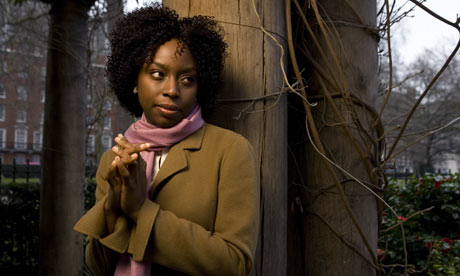The single story is where the same story gets told over and over again about a people or a place we do not know first-hand. The danger is that it leads to stereotypes, to half-truths not the full truth. So, for example, many Americans think of Africa as being full of wild animals and hungry, unwashed children, not a place where there are libraries, bus drivers and true love. Or they think of Australia as the land of kangaroos, the outback and Crocodile Dundee, not a place of boring suburbs and proper English.
The single story is the opposite of what Chinua Achebe calls “the balance of stories”, where all people tell their own stories in their own words. Something that has only begun with the rise of postcolonial literature – “the Empire writes back”, as Salman Rushdie puts it.
But for the most part our stories are still stuck in colonial times where mainly just white men tell their own stories – or their stories about others – over and over again. Not just in books written, but in news stories told and films directed. The only difference is that now a few tokens, like Achebe himself, are thrown in for good measure.
But tokenism is not enough. Imagine if everything you knew about America and white people came only from the films of Alfred Hitchcock or Quentin Tarantino. There is no way that any token – any single story, author or film director – can present the human fullness of his own people, his own time and place. It will necessarily be limited, making his own people seem limited, strange and exotic to those who know nothing else about them.
Even within America white people think of black men as drug dealers with 13 children by six different baby mamas. I know someone like that, so it is not made up, but most black men I know are hard-working, middle-class family men. And it is not just me: half of blacks in America are middle-class. But you would never know that from watching American television – because there is no balance of stories.
Chimamanda Adichie (pictured above) gave a beautiful, beautiful speech about the danger of the single story (see below for the link). You might remember her as the author of “Half of a Yellow Sun” (2006). She grew up in middle-class Nigeria, the daughter of a professor. When she came to America to study her American roommate was shocked that her English was so good and that her tape of “tribal music” was, in fact, Mariah Carey.
But then came Adichie’s turn to be shocked: from the American press she thought of Mexico as this place where poor, helpless people came from. But when she got to Mexico she saw people laughing and smoking and going to work. It should not have shocked her, but it did.
It was not that the American press had lied to her. Instead it was the power of the single story to paint a false picture of the world.
See also:
- Chimamanda Adichie: The danger of the single story – full video (18 minutes) and text of her speech
- Chimamanda Ngozi Adichie
- white gaze
- stereotype
- American film and television and race:
- Salman Rushdie
- The black middle-class in America
- exotic women








